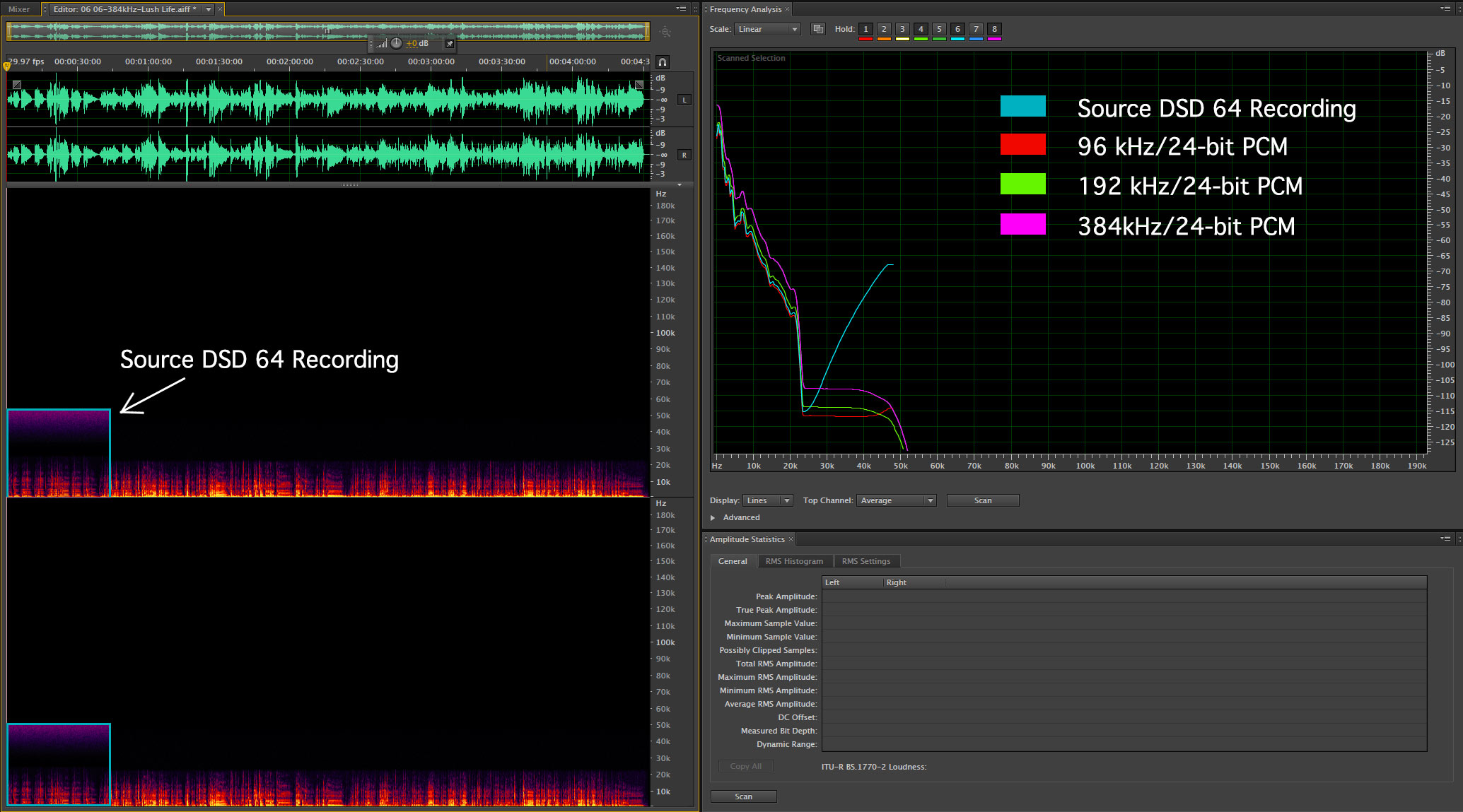A High Regard for Emptiness Part II
Continued from yesterday…
In fact, Chris Connaker of Computer Audiophile spends a lot of time talking about the wonderful packaging and the hand numbered CD version that he got from Kent:
The CD-R is not just any off-the-shelf CD-R. Kent did a great deal of research to find the best quality CD-R discs with the lowest error rate available. As expected the 16 bit / 44.1 kHz CD-R version is playable in every Compact Disc player. The individually hand numbered CD-R disc even has a matching PlexTools graph that displays the measurements of the exact CD-R in the package. At the bottom of this test results card is the computer file name of the actual test conducted. This file name matches the serial number of the CD-R. In my case the CD-R is number 1184 and the corresponding PlexTools disc measurement graph was saved as number 1184. The usefulness of this specific information will be different for every person [Editors NOTE: The information is pointless for me…just feel good nonsense]. One thing is certain, it’s quite evident that each of these packages was created with care and magnificent attention to detail. The DVD disc contains both 24/96 AIFF and 24/192 AIFF versions of the Audiophile Jazz Prologue III album. This allows listeners to compare all three versions of the same material.
I’d like to ask Chris what he thought of the 96 and 192 kHz versions as opposed to the CD-R version, if he actually listened to them. According to the investigation that I performed, they are ALL exactly the same. In his wrap up, Chris says, “Kent Poon’s Audiophile Jazz Prologue III” is easily my favorite album of the last twelve months. I don’t have one negative comment about the music or the sound quality.
How about a comment on the uselessness of the “high-resolution” versions on the DVD?
Kent got an excellent review from a member of the Korg team as well:
I’m Koji Oishi. I’m an engineer at Korg, a manufacturer of musical instruments and digital recorders based in Japan, and I’ve developed three DSD recorders (MR-1/1000/2000S) and a DSD software application called AudioGate so far. I’ve just downloaded 3 DSD files from your Free Hi-Res Samples page, and played them back with our MR-2000S DSD recorder. I need to say that the sound quality is amazing! Very clear and smooth, but the warmth of analog sound is still there.
I’ve listened to the samples in my studio as well. And I like the sound of Kent’s production. There’s too much dynamics processing going on for my taste (I don’t know if he does his own mastering or not). The vocals should be set free in my opinion but overall it’s a nice recording. I consider it a very nice standard definition …suitable for CD… recording.
However, from where I stand Kent should have issued a CD, SACD or a DSD 64 download file and left it at that. Just look at the spectragraph. This is probably one of the worst plots I’ve ever looked at. I actually thought I had made a mistake and had to go back and do the tests again. The light blue light is the original DSD 64 recording (probably done on a Korg MR-2000). There is no information above 22 kHz except the expected uncorrelated noise due to the 1-bit conversion used.
Here’s the spectragraph again…
Figure 1 – The spectragraph of the Lush Life download. [Click to enlarge]
So if the information isn’t there in a normal DSD 64 recording, what could possibly motivate Design w Sound to convert the tracks to 96, 192 and even 384 kHz? The music stops at 22 kHz. The flat lines to right of 22 kHz on the plot are 110 dB down and are only flat because the DSD 64 files was subjected to a Low Pass Filter. The 192 kHz version is exactly the same as the 384 kHz version. I admit that I increased the amplitude on the 384 kHz version by 3 dB so that I could show two distinct plots (when I first did it…they overlapped each other perfectly!).
The digital black emptiness to the right of 51 kHz is all digital zeros! No sound. No ultrasonics or high order partials. Yet this record has received numerous positive reviews as a high-resolution release by prominent audiophile writers.
I know I’m the left hand brain guy that is probably too concerned about the spectra and the analysis, but I find this misinformation troublesome as we head into a season of “high-resolution” enthusiasm and marketing from the CEA and others. Maybe we should just stick with compact discs. At least we’d know what we’re getting.


